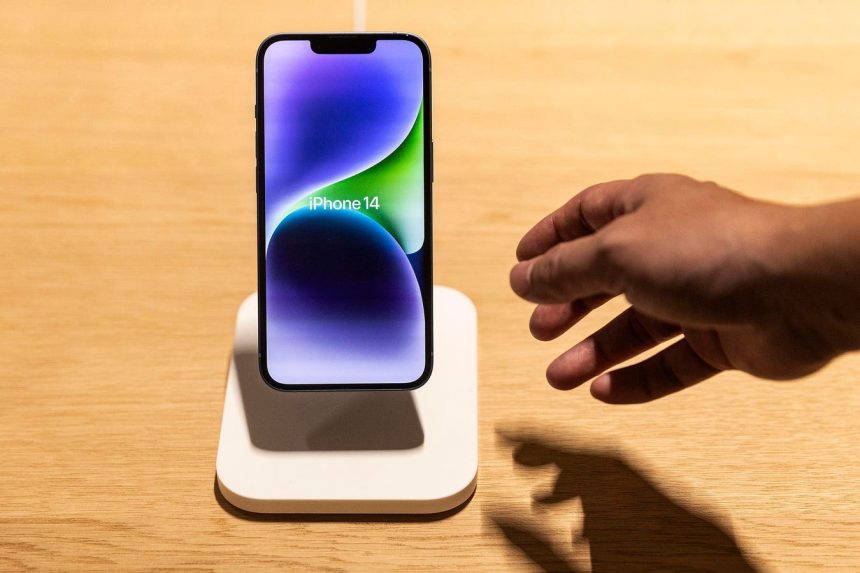The forthcoming fourth-generation iPhone SE, Apple’s most budget-friendly smartphone, is poised for a significant transformation. Beyond the anticipated shift to a new naming convention, the next SE will boast a redesigned chassis, departing from the practice of repurposing older iPhone designs. While previous iterations have relied on familiar forms like the iPhone 8 and iPhone XR, the new SE is rumored to adopt a more contemporary aesthetic, potentially mirroring the design language of the iPhone 14. This departure from established convention signals a shift in Apple’s approach to its entry-level offering, hinting at a more premium experience. Accompanying these substantial changes is an anticipated price increase, reflecting the upgraded features and new design.
One of the most notable upgrades is the rumored inclusion of Face ID, Apple’s facial recognition technology, marking its debut in the SE line. This addition would replace the Touch ID fingerprint sensor integrated into the home button, a hallmark of previous SE models. This transition aligns the SE with Apple’s current design philosophy and provides a more seamless user experience. Coupled with Face ID, the next SE is also predicted to incorporate the A16 Bionic chip, the same powerful processor found in the iPhone 14 Pro, ensuring a significant performance boost over its predecessors. Furthermore, speculations suggest the next SE will be the first in the series to feature an OLED display, offering richer colors, deeper blacks, and improved contrast compared to the LCD panels used in previous models.
Another significant departure for the iPhone SE line is the move away from its characteristically compact size. While previous SE models were praised for their pocket-friendly dimensions, the new SE is expected to adopt a larger display, falling in line with the general trend towards larger screens in the smartphone market. This shift suggests that Apple is prioritizing a more immersive viewing experience over the compact form factor that defined earlier SE generations. While this may disappoint some users who appreciated the smaller size, it aligns the SE with the current market demand and allows for greater screen real estate for multimedia consumption and app usage.
Mark Gurman, a reputable Apple analyst at Bloomberg, predicts a noticeable price hike for the next iPhone SE. While the current model starts at $429, Gurman anticipates a price closer to $500, a significant increase for a device traditionally positioned as Apple’s most affordable iPhone. This price adjustment reflects the substantial upgrades incorporated into the new model, including the redesigned chassis, Face ID, OLED display, and a more powerful processor. While this departure from the SE’s historically low price point might deter some budget-conscious consumers, the enhanced features and modern design are likely to justify the increased cost for many. This move could also position the SE as a more compelling upgrade option for users with older iPhones.
The enhanced camera system is another key upgrade expected in the next iPhone SE. While details remain scarce, reports suggest a significant improvement over the camera in the current SE. This could include a higher resolution sensor, improved image processing, and potentially additional camera features. A more advanced camera would be a welcome addition, addressing a common criticism of previous SE models. Coupled with the powerful A16 Bionic chip, the improved camera system is likely to offer a significantly enhanced photography experience, making the new SE a more versatile device for capturing photos and videos.
Despite the anticipated price increase, the next iPhone SE is expected to offer excellent value for its features. The combination of a modern design, powerful processor, advanced camera system, and OLED display positions the new SE as a strong contender in the mid-range smartphone market. While the higher price tag might make it less accessible to some budget-conscious consumers, the improved features and performance are likely to attract a wider audience, including those looking to upgrade from older iPhones. This strategic move by Apple could potentially expand its market share, particularly in emerging markets where affordability is a key factor.
While some analysts, including Gurman, suggest that an even cheaper iPhone would be beneficial for expanding Apple’s market share in certain regions, others argue that Apple’s brand identity is built on offering premium products, even at a higher price point. This approach has historically proven successful for Apple, and maintaining this premium positioning is likely to remain a key aspect of their strategy. While a cheaper iPhone could potentially attract more price-sensitive consumers, it could also dilute Apple’s brand image and cannibalize sales of its higher-end models.
In conclusion, the next iPhone SE represents a significant departure from previous generations, incorporating a host of new features and a redesigned chassis. While the anticipated price increase might deter some budget-conscious consumers, the improved specifications and modern design are likely to appeal to a wider audience seeking a more premium experience. This strategic shift positions the SE as a more compelling upgrade option and could potentially expand Apple’s market share in various regions. The move towards a more premium SE also reflects Apple’s commitment to offering high-quality products, even in its more affordable offerings. This dedication to quality is likely to remain a core aspect of Apple’s brand identity, even as it navigates the competitive landscape of the smartphone market.



